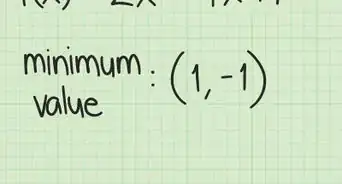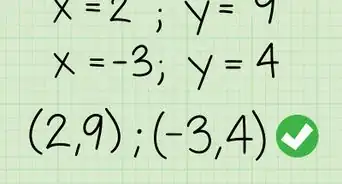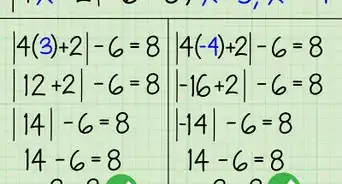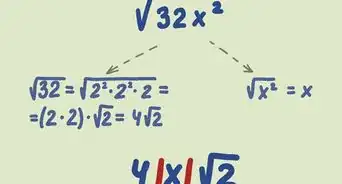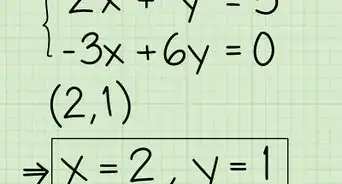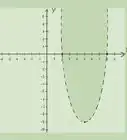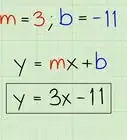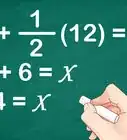This article was co-authored by David Jia. David Jia is an Academic Tutor and the Founder of LA Math Tutoring, a private tutoring company based in Los Angeles, California. With over 10 years of teaching experience, David works with students of all ages and grades in various subjects, as well as college admissions counseling and test preparation for the SAT, ACT, ISEE, and more. After attaining a perfect 800 math score and a 690 English score on the SAT, David was awarded the Dickinson Scholarship from the University of Miami, where he graduated with a Bachelor’s degree in Business Administration. Additionally, David has worked as an instructor for online videos for textbook companies such as Larson Texts, Big Ideas Learning, and Big Ideas Math.
There are 7 references cited in this article, which can be found at the bottom of the page.
This article has been viewed 382,227 times.
Completing the square is a helpful technique that allows you to rearrange a quadratic equation into a neat form that makes it easy to visualize or even solve. You can complete the square to rearrange a more complicated quadratic formula or even to solve a quadratic equation. If you want to know how to do it, just follow these steps.
Steps
Transforming a Standard Equation to Vertex Form
-
1Write down the equation. Let's say you're working with the following equation: 3x2 - 4x + 5.
-
2Factor out the coefficient of the squared term from the first 2 terms. To factor out a three from the first two terms, simply pull out a 3 and place it around a set of parenthesis around both terms, while dividing each term by 3. 3x2 divided by 3 is simply x2 and 4x divided by 3 is 4/3x. So, the new equation should look like this: 3(x2 - 4/3x) + 5. The 5 will remain outside of the equation because you did not divide it by 3.Advertisement
-
3Halve the second term and square it. The second term, also known as the b term in the equation, is 4/3. Halve the second term, or divide it by 2 first. 4/3 ÷ 2, or 4/3 x 1/2, is equal to 2/3. Now, square this term by squaring both the numerator and denominator of the fraction. (2/3)2 = 4/9. Write this term down.[1]
-
4Add and subtract this term from the equation. You'll need this "extra" term to turn the first three terms in this equation into a perfect square. But you have to remember that you added it by subtracting it from the equation as well. Though obviously, it won't do you much good to simply combine the terms -- you'll be back where you started. The new equation should look like this: 3( x2 - 4/3 x + 4/9 - 4/9) + 5.[2]
-
5Pull the term you subtracted out of the parenthesis. Since you're working with a coefficient of 3 outside the parentheses, you can't just pull out the -4/9. You'll have to multiply it by 3 first. -4/9 x 3 = -12/9, or -4/3. If you're not working with an equation with a coefficient other than 1 over the x2 term, then you could skip this step.
-
6Convert the terms in the parentheses into a perfect square. Right now, you're left with 3(x2 -4/3x +4/9) within the parentheses. You worked backwards to get the 4/9, which was really another way of finding the term that would complete the square. So, you can rewrite those terms like this: 3(x - 2/3)2. All you had to do was halve the second term and remove the third. You can check that this works by multiplying it out to see that it gives you the first three terms of the equation.[3]
- 3(x - 2/3)2 =
- 3(x - 2/3)(x -2/3) =
- 3[(x2 -2/3x -2/3x + 4/9)]
- 3(x2 - 4/3x + 4/9)
-
7Combine the constant terms. You're left with two constant terms, or terms that aren't attached to a variable. Right now, you're left with 3(x - 2/3)2 - 4/3 + 5. All you have to do is add up -4/3 and 5 to get 11/3. You do this by setting them to the same denominator: -4/3 and 15/3, and then adding the numerators to get 11, and keeping the denominator as 3.[4]
- -4/3 + 15/3 = 11/3.
-
8Write the equation in vertex form. You're all done. The final equation is 3(x - 2/3)2 + 11/3. You can remove the coefficient of 3 by dividing both parts of the equation to get (x - 2/3)2 + 11/9. You have now successfully placed the equation into vertex form, which is a( x - h )2 + k, where k represents the constant term.[5]
Solving a Quadratic Equation
-
1Write down the problem. Let's say you're working with the following equation: 3x2 + 4x + 5 = 6.[6]
-
2Combine the constant terms and put them on the left side of the equation. The constant terms are any terms that aren't attached to a variable.[7] In this case, you have 5 on the left side and 6 on the right side. You want to move 6 over to the left, so you'll have to subtract 6 from both sides of the equation. That will leave you with 0 on the right side (6-6) and -1 on the left side (5-6). The equation should now read: 3x2 + 4x - 1 = 0.[8]
-
3Factor out the coefficient of the squared term. In this case, 3 is the coefficient of the x2 term. To factor out a 3, just pull out a 3, place the remaining terms in parentheses, and divide each term by 3. So, 3x2 ÷ 3 = x2, 4x ÷ 3 = 4/3x, and 1 ÷ 3 = 1/3. The equation should now read: 3(x2 + 4/3x - 1/3) = 0.
-
4Divide by the constant you just factored out. This means that you can get rid of that pesky 3 term outside the parentheses for good. Since you divided every term by 3, it can be removed without impacting the equation. Now you have x2 + 4/3x - 1/3 = 0[9]
-
5Halve the second term and square it. Next, take the second term, 4/3, also known as the b term, and find half of it. 4/3 ÷ 2 or 4/3 x 1/2, is 4/6, or 2/3. And 2/3 squared is 4/9. When you're done, you'll have to write it on the left and the right side of the equation, since you're essentially adding a new term. You'll need it on both sides of the equation to keep it balanced. The equation should now read x2 + 4/3 x + 2/32 - 1/3 = 2/32
-
6Move the original constant term to the right side of the equation and add it to the term on that side. Move the original constant term, -1/3, over to the right side to make it 1/3. Add it to the term you just placed there, 4/9, or 2/32. Find a common denominator to combine 1/3 and 4/9 by multiplying both the top and bottom of 1/3 by 3. 1/3 x 3/3 = 3/9. Now, add up 3/9 and 4/9 to get 7/9 on the right side of the equation. This yields: x2 + 4/3 x + 2/32 = 4/9 + 1/3 and then x2 + 4/3 x + 2/32 = 7/9.
-
7Write the left side of the equation as a perfect square. Since you've already used a formula to find the missing term, the hard part is already over. All you have to do is place x and half of the second coefficient in parentheses and square them, like so:(x + 2/3)2. Note that factoring that perfect square will give you the three terms: x2 + 4/3 x + 4/9. The equation should now read: (x + 2/3)2 = 7/9.
-
8Take the square root of both sides. On the left side of the equation, the square root of (x + 2/3)2 is simply x + 2/3. On the right side, you will get +/- (√7)/3. The square root of the denominator, 9, is an even 3, and the square root of 7 is √7. Remember to write +/- because a square root can be positive or negative.[10]
-
9Isolate the variable. To isolate the variable x, just move the constant term 2/3 over to the right side of the equation. You now have two possible answers for x:± (√7)/3 - 2/3. These are your two answers. You can leave it at that or find the actual square root of 7 if you need to give an answer without the radical sign.[11]
Community Q&A
-
QuestionWhy do you halve the b value and then square it? It makes no sense to me.
 Community AnswerIt does seem strange and arbitrary, but there is a reason for it. The power move is taking the square root of both sides, but you can't simplify the square root of most polynomials. The step you ask about is a setup move to make the power move work. If I have, for example, x^2 + 4x = 5, and take the square root of both sides, nothing happens, it just makes a mess. But if I add 4 to both sides first and take the square root of both sides of x^2 + 4x + 4 = 9, it simplifies to |x+2| = 3 and the quadratic equation is reduced to a linear equation.
Community AnswerIt does seem strange and arbitrary, but there is a reason for it. The power move is taking the square root of both sides, but you can't simplify the square root of most polynomials. The step you ask about is a setup move to make the power move work. If I have, for example, x^2 + 4x = 5, and take the square root of both sides, nothing happens, it just makes a mess. But if I add 4 to both sides first and take the square root of both sides of x^2 + 4x + 4 = 9, it simplifies to |x+2| = 3 and the quadratic equation is reduced to a linear equation. -
QuestionWhat's the completing the square formula if x > 1?
 DonaganTop AnswererThe value of x doesn't matter. The process remains as shown above.
DonaganTop AnswererThe value of x doesn't matter. The process remains as shown above. -
QuestionIn Part 1 of 2, how did you get 11/9 in Step 8?
 DonaganTop AnswererBoth sides of that equation are being divided by 3 (to get rid of the coefficient of the first term). Dividing the second term (11/3) by 3 gives us 11/9.
DonaganTop AnswererBoth sides of that equation are being divided by 3 (to get rid of the coefficient of the first term). Dividing the second term (11/3) by 3 gives us 11/9.
References
- ↑ http://www.purplemath.com/modules/sqrquad.htm
- ↑ http://www.purplemath.com/modules/sqrquad.htm
- ↑ https://www.khanacademy.org/math/algebra/x2f8bb11595b61c86:quadratic-functions-equations/x2f8bb11595b61c86:more-on-completing-square/a/solving-quadratic-equations-by-completing-the-square
- ↑ https://www.cuemath.com/algebra/completing-the-square/
- ↑ https://mathbitsnotebook.com/Algebra1/Quadratics/QDVertexForm.html
- ↑ https://www.mathsisfun.com/algebra/quadratic-equation.html
- ↑ https://www.khanacademy.org/math/algebra/x2f8bb11595b61c86:quadratic-functions-equations/x2f8bb11595b61c86:more-on-completing-square/a/solving-quadratic-equations-by-completing-the-square
- ↑ https://www.whatcom.edu/home/showdocument?id=1766
- ↑ https://www.whatcom.edu/home/showdocument?id=1766
- ↑ https://www.khanacademy.org/test-prep/sat/x0a8c2e5f:untitled-652/x0a8c2e5f:passport-to-advanced-math-lessons-by-skill/a/gtp--sat-math--article--solving-quadratic-equations--lesson
- ↑ https://www.khanacademy.org/test-prep/sat/x0a8c2e5f:untitled-652/x0a8c2e5f:passport-to-advanced-math-lessons-by-skill/a/gtp--sat-math--article--solving-quadratic-equations--lesson
About This Article
To complete the square for a standard equation, you'll need to transform the equation to vertex form. Start by factoring out the coefficient of the squared term from the first two terms, then halve the second term and square it. Next, add and subtract this term from the equation. Pull the term you subtracted out of the parentheses, then convert the terms in the parentheses into a perfect square. Lastly, combine the constant terms and write out the equation in vertex form. The vertex form is your answer. If you want to learn more, like how to solve a quadratic function, keep reading the article!
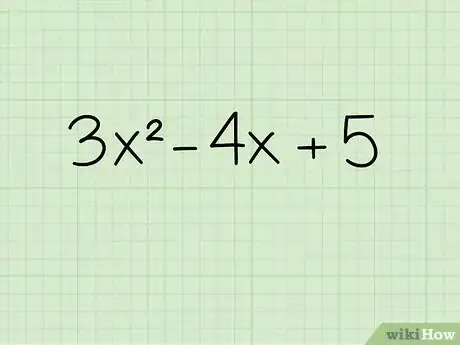
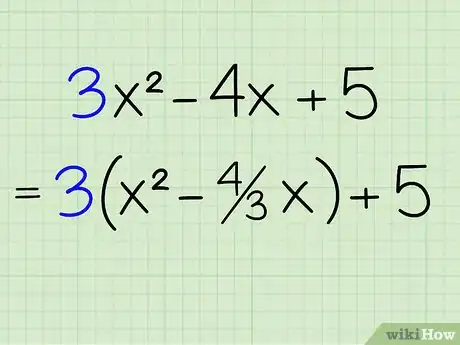

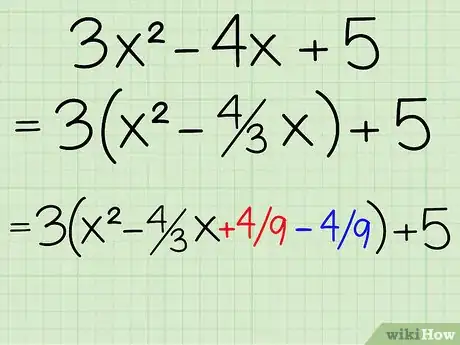

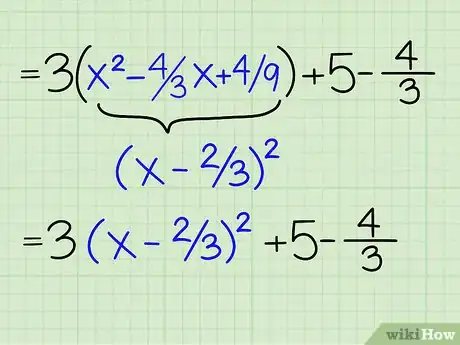
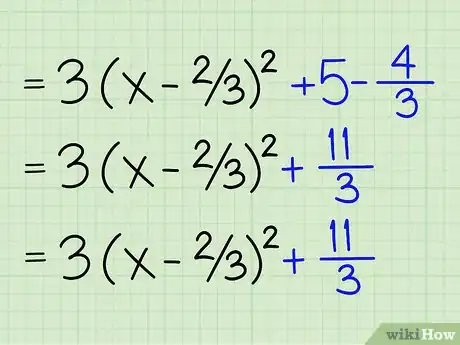
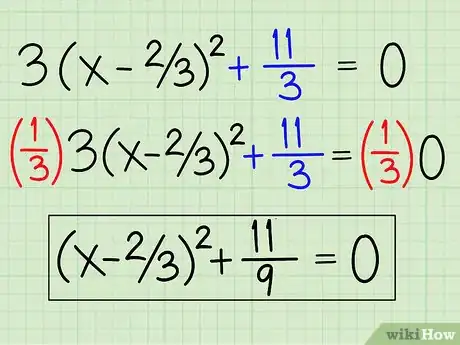
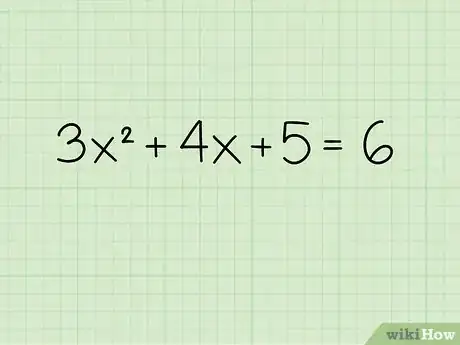
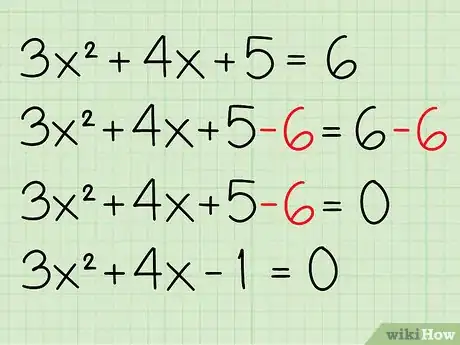
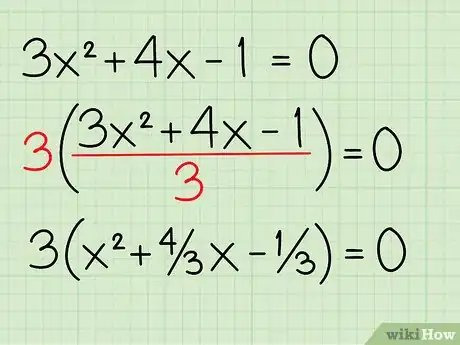
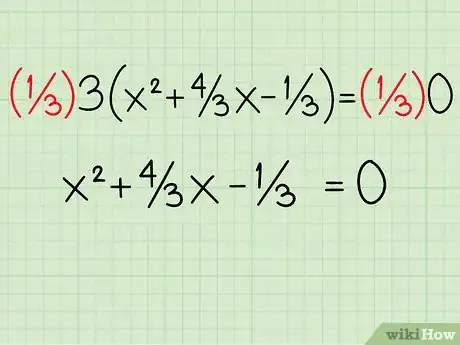
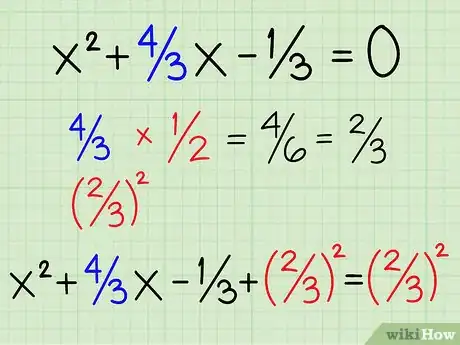
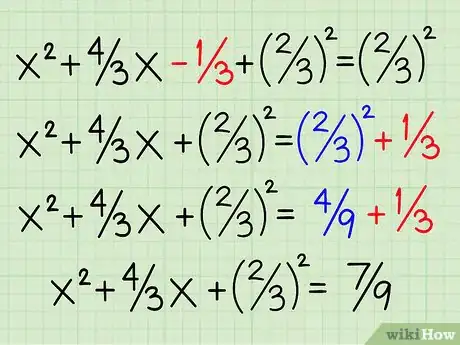
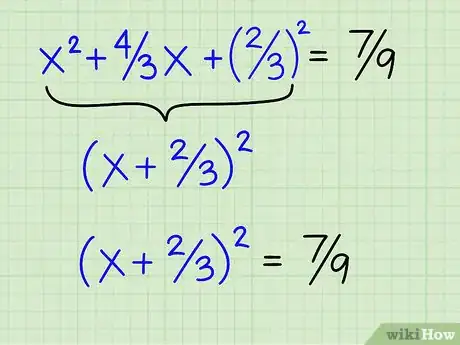
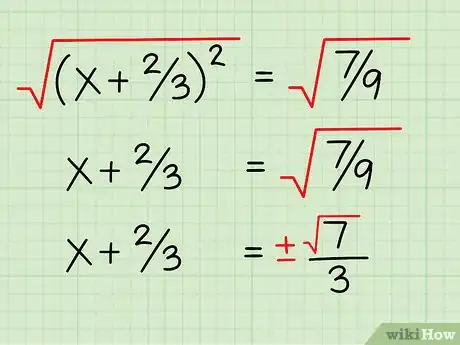

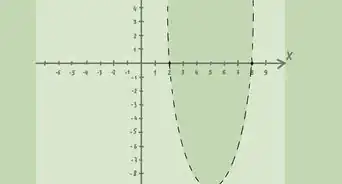

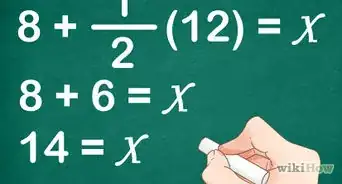
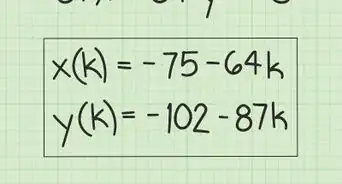

-Step-24-Version-2.webp)

